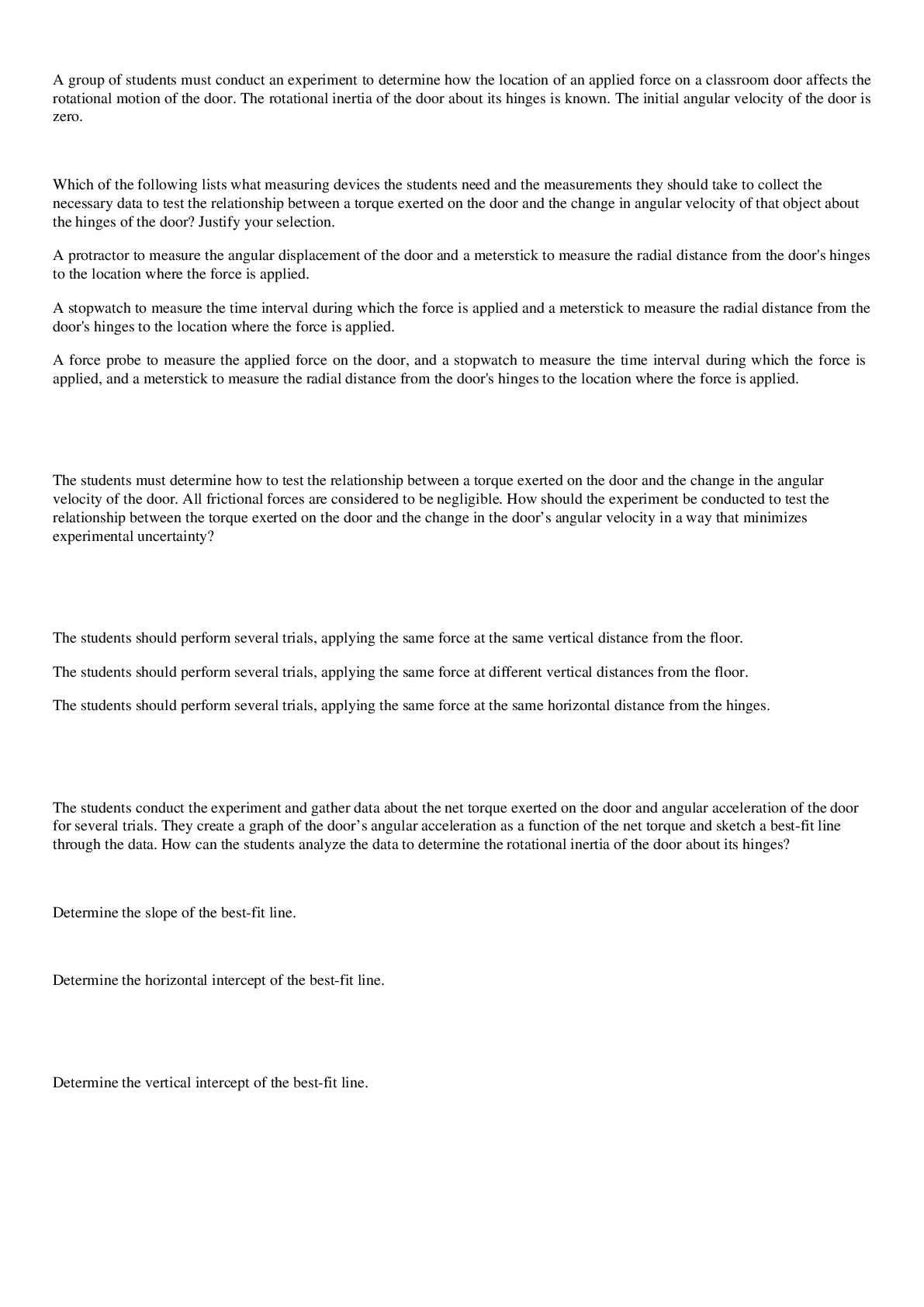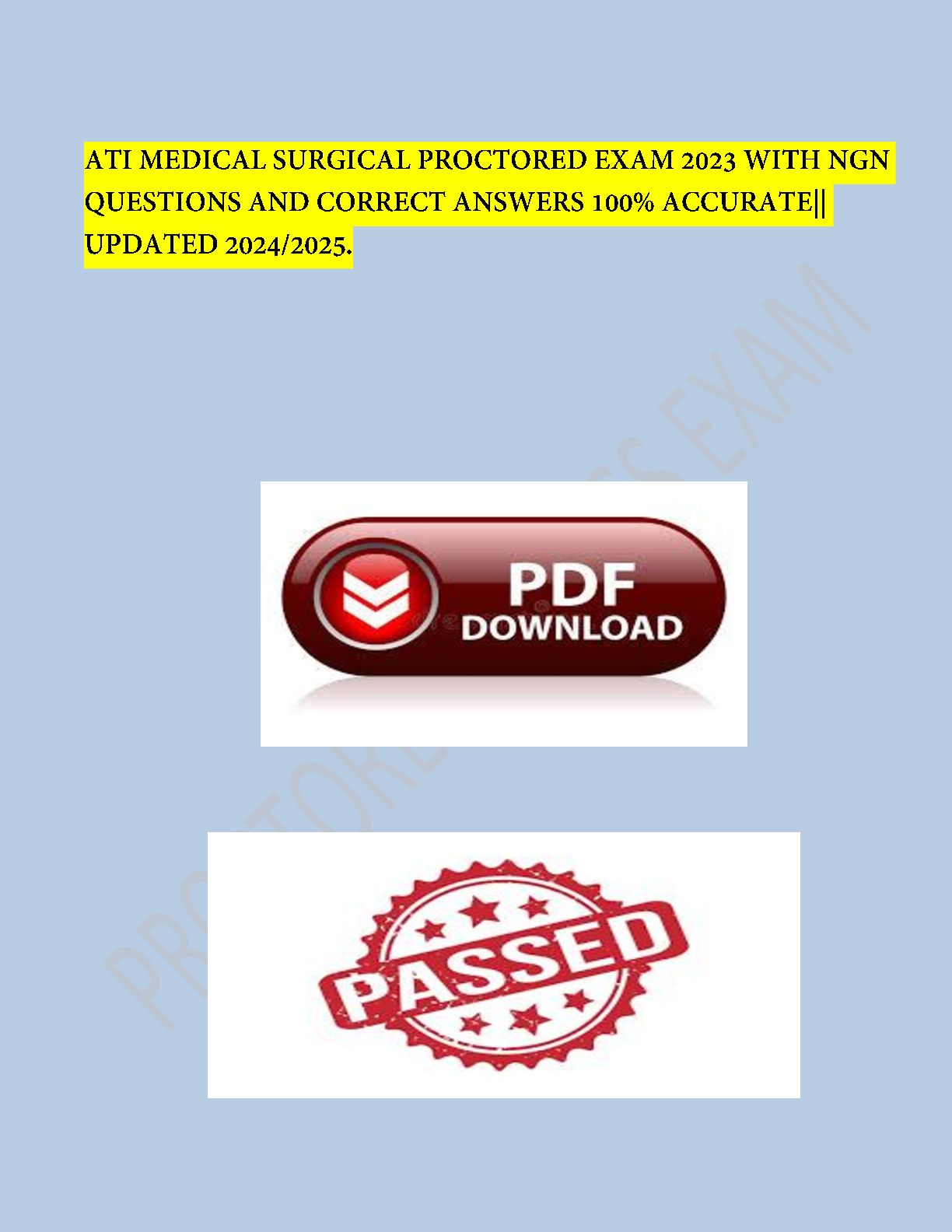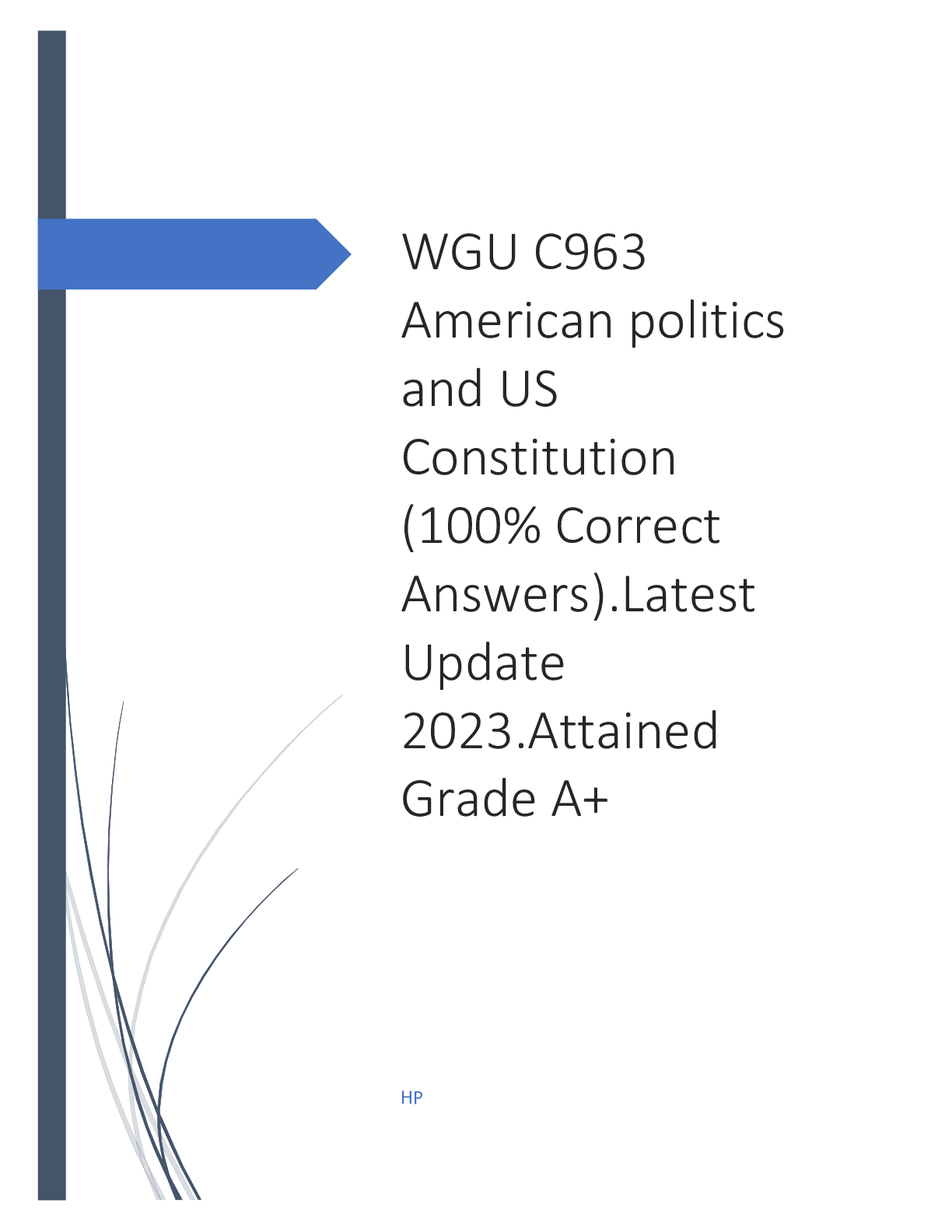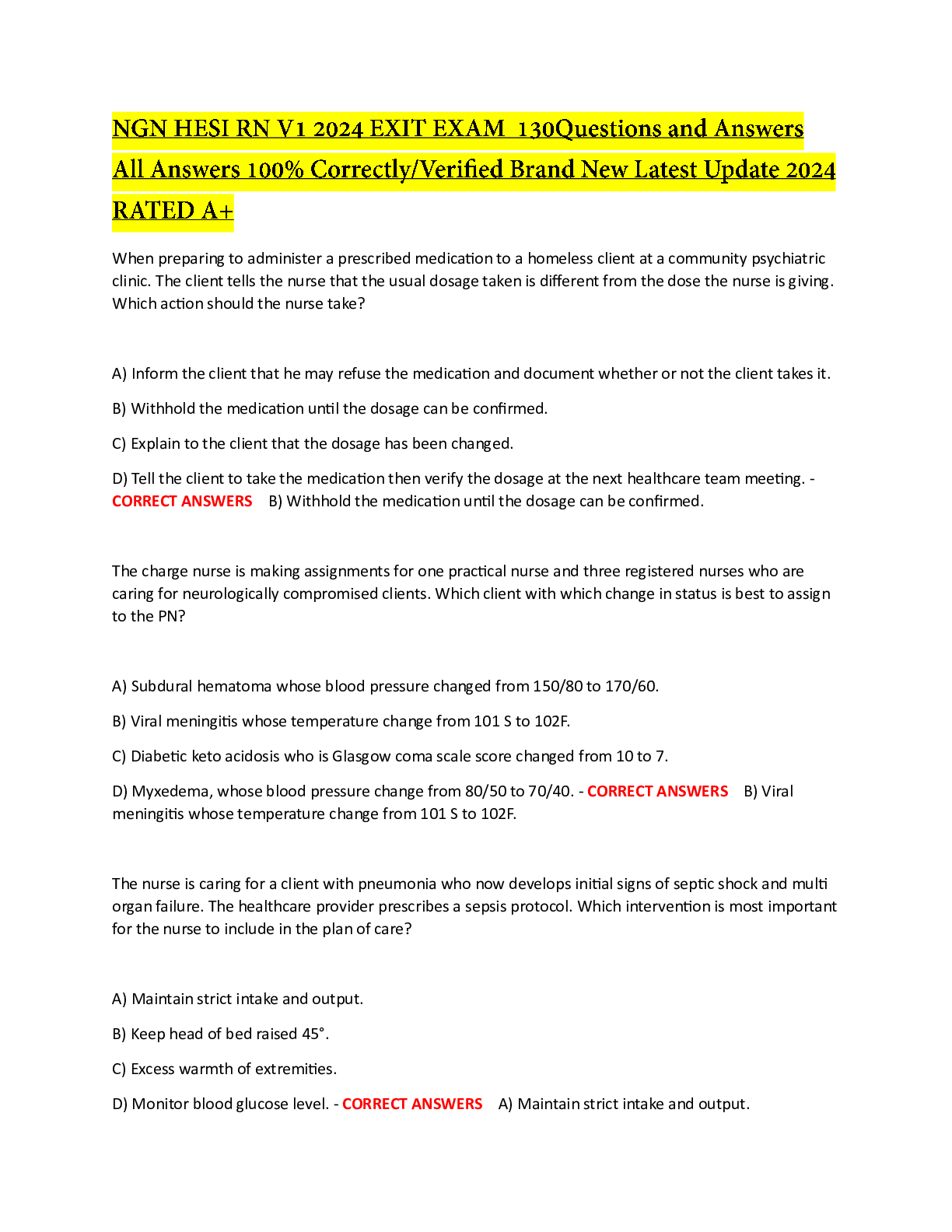BASIC PHARMACOLOGY FOR NURSES 17TH EDITION WILLIHNGANZ TEST BANK
Document Content and Description Below
N URSINGTB.COM Chapter 02: Basic Principles of Drug Action and Drug Interactions Clayton/Willihnganz: Basic Pharmacology for Nurses, 17th Edition MULTIPLE CHOICE 1. The nurse assesses hives in a patie... nt started on a new medication. What is the nurse’s priority action? a. Notify physician of allergic reaction. b. Notify physician of idiosyncratic reaction. c. Notify physician of potential teratogenicity. d. Notify physician of potential tolerance. ANS: A An allergic reaction is indicative of hypersensitivity and manifests with hives and/or urticaria, which are easily identified. An idiosyncratic reaction occurs when something unusual or abnormal happens when a drug is first administered. A teratogenic reaction refers to the occurrence of birth defects related to administration of the drug. Tolerance refers to the body’s requirement for increasing dosages to achieve the same effects that a lower dose once did. DIF: Cognitive Level: Application REF: Page 17 OBJ: 4 TOP: Nursing Process Step: Assessment MSC: NCLEX Client Needs Category: Physiological Integrity NOT: CONCEPT(S): Clinical Judgment; Safety 2. The nurse administers an initial dose of a steroid to a patient with asthma. Thirty minutes after administration, the nurse finds the patient agitated and stating that “everyone is out to get me.” What is the term for this unusual reaction? a. Desired action b. Adverse effect c. Idiosyncratic reaction d. Allergic reaction ANS: C Idiosyncratic reactions are unusual, abnormal reactions that occur when a drug is first administered. Patients typically exhibit an overresponsiveness to a medication related to diminished metabolism. These reactions are believed to be related to genetic enzyme deficiencies. Desired actions are expected responses to a medication. Adverse effects are reactions that occur in another system of the body; they are usually predictable. Allergic reactions appear after repeated medication dosages. DIF: Cognitive Level: Knowledge REF: Page 18 OBJ: 4 TOP: Nursing Process Step: Evaluation MSC: NCLEX Client Needs Category: Physiological Integrity NOT: CONCEPT(S): Patient Education; Clinical Judgment; Caregiving; Safety; Sensory Perception 3. Which is the best description of when drug interactions occur? a. On administration of toxic dosages of a drug b. On an increase in the pharmacodynamics of bound drugs c. On the alteration of the effect of one drug by another drug d. On increase of drug excretion [Show More]
Last updated: 2 years ago
Preview 1 out of 21 pages
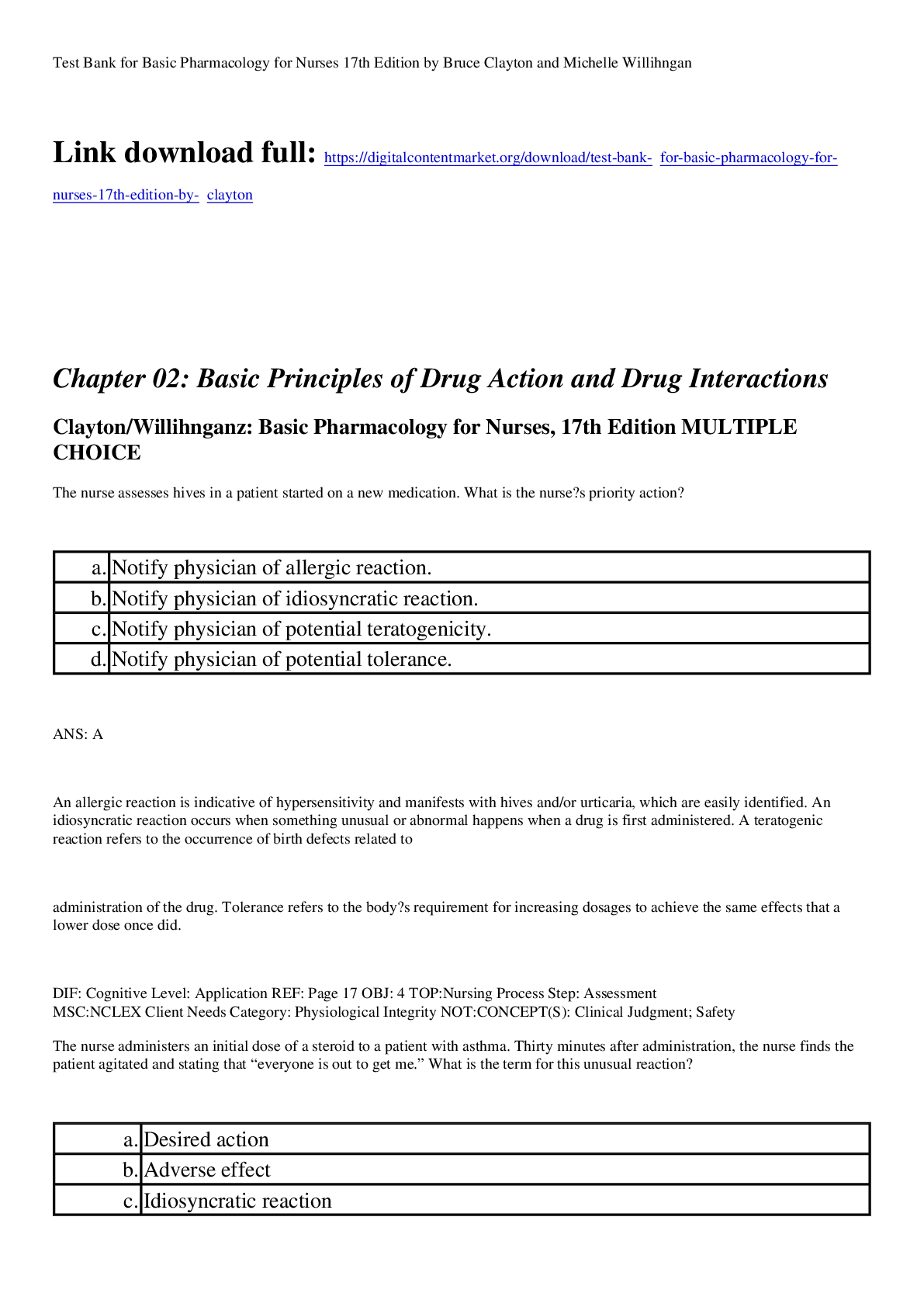
Buy this document to get the full access instantly
Instant Download Access after purchase
Buy NowInstant download
We Accept:

Reviews( 0 )
$7.00
Can't find what you want? Try our AI powered Search
Document information
Connected school, study & course
About the document
Uploaded On
Mar 06, 2023
Number of pages
21
Written in
Additional information
This document has been written for:
Uploaded
Mar 06, 2023
Downloads
0
Views
55



